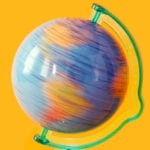 Our World
Our World  Our World
Our World  Weird Stuff
Weird Stuff 10 Fascinating Facts You Might Not Know About Snow
 Miscellaneous
Miscellaneous Top 10 Things Crypto Was Supposed to Change & What Actually Did
 History
History 10 Huge Historical Events That Happened on Christmas Eve
 Music
Music 10 Surprising Origin Stories of Your Favorite Holiday Songs
 History
History 10 Less Than Jolly Events That Occurred on December 25
 Weird Stuff
Weird Stuff 10 Funny Ways That Researchers Overthink Christmas
 Politics
Politics 10 Political Scandals That Sent Crowds Into the Streets
 Weird Stuff
Weird Stuff Ten Bizarre Facts About The Doge Meme
 Our World
Our World 10 Ways Your Christmas Tree Is More Lit Than You Think
 Our World
Our World 10 Archaeological Discoveries of 2025 That Refined History
 Weird Stuff
Weird Stuff 10 Fascinating Facts You Might Not Know About Snow
 Miscellaneous
Miscellaneous Top 10 Things Crypto Was Supposed to Change & What Actually Did
Who's Behind Listverse?

Jamie Frater
Head Editor
Jamie founded Listverse due to an insatiable desire to share fascinating, obscure, and bizarre facts. He has been a guest speaker on numerous national radio and television stations and is a five time published author.
More About Us History
History 10 Huge Historical Events That Happened on Christmas Eve
 Music
Music 10 Surprising Origin Stories of Your Favorite Holiday Songs
 History
History 10 Less Than Jolly Events That Occurred on December 25
 Weird Stuff
Weird Stuff 10 Funny Ways That Researchers Overthink Christmas
 Politics
Politics 10 Political Scandals That Sent Crowds Into the Streets
 Weird Stuff
Weird Stuff Ten Bizarre Facts About The Doge Meme
 Our World
Our World 10 Ways Your Christmas Tree Is More Lit Than You Think
10 Answers To Strange Questions About Life And Death
Whether we refer to the act of living or to all sentient beings in this world, life has always been a difficult concept for humans to understand. Even when life has preceded us on this planet for 3.5 billion years—and we ourselves have roamed Earth for plenty of millennia—there are many questions about it that we still cannot answer. What is the meaning of life? Is there life after death? These, among many others, are typical questions of any philosophical debate, questions as old as humankind itself.[1]
But then we have strange questions, unconventional doubts about life that do not usually come to our minds on a normal day. Have you ever wondered what Earth would be like if it were devoid of all life? Then this article is for you. If not, keep reading anyway; some of the answers, or the questions themselves, exposed here will certainly not leave you indifferent.
10 How Much Life Has Ever Existed?
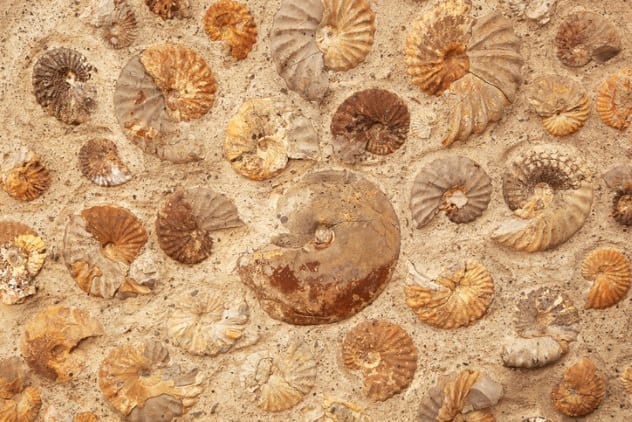
Currently, the human population is slowly approaching eight billion people. That is certainly quite a number, but it does not even compare with the 100 trillion ants under our feet. And it is estimated that, at any given time, there are five nonillion bacteria in the world—that’s a “5” followed by 30 zeros. There is no doubt that there are so many living organisms on Earth that trying to count them all would be an unachievable task. And again, all this is just about the currently existing life-forms. But what about all the life that has existed in the past?
Determining how many creatures could have inhabited Earth throughout the history of the planet is extremely difficult. It is believed that complex life has been around in this world for at least 570 million years. And the fossils we have managed to recover are a minimum percentage compared to the prehistoric remains that are either out of our reach or have been destroyed by geological processes. But using their ingenuity, scientists have come up with a correlation between the number of fossils and the currently known species to estimate the total of life that has ever existed. Today, the experts are pretty convinced that 99.9 percent of all species on Earth are extinct.
This number is understandable, considering that the Earth’s biosphere has suffered five mass extinctions during the last 400 million years. On average, more than 80 percent of all living beings were erased from the face of the Earth in each of these five events. And a significant part of the scientific community believes that today, we are facing a sixth mass extinction. Estimates say that species disappear 100 times faster today than before our existence, and in the last 50 years, humans have eliminated 60 percent of animal life. So, unfortunately for us, death is much more common than life in this world.[2]
9 Is Life On Earth Of Alien Origin?
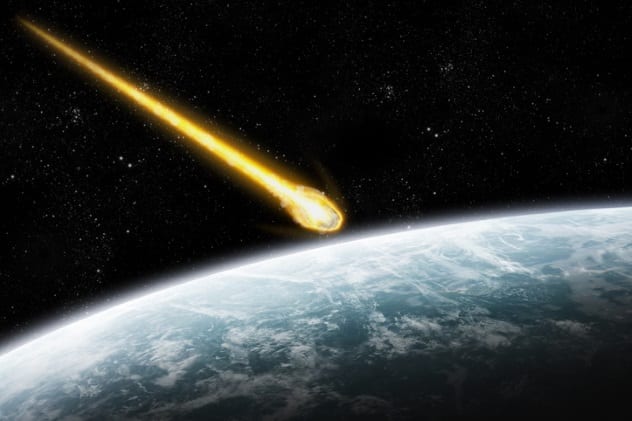
Today, most scientists are sure that all life on Earth comes from a common ancestor. This primal being would have been nothing more than a unicellular organism, created by random chemical reactions in the early Earth. However, what scientists do not yet understand is exactly how these processes took place. And all their attempts to replicate the origin of life have failed so far. Perhaps the answer to this mystery could be found in a theory called lithopanspermia.
The theory of panspermia suggests that early life-forms were brought to Earth from somewhere else in the universe, such as nearby planets. Within the same idea, lithopanspermia states that rocky fragments of another world containing microbial life were ejected into space after some kind of planetary impact. Millions of years later, those rocks reached Earth, and the life they carried inside began its evolutionary cycle here. The concept behind panspermia appeared several centuries ago in France, and since then, it has been an object of scientific study, although other theories generate more interest nowadays.
Nevertheless, there are several indications supporting the possibility that lithopanspermia really occurred. Using collision simulations, researchers at Pennsylvania State University have concluded that it is statistically possible that a space rock containing microbes can travel from one planet to another by ejection.[3] Of course, there is the problem that space is too hostile to allow the survival of life, due to factors such as radiation and extreme temperatures. But we know that there are multiple bacterial species capable of resisting the harshest environments, from the hottest places on Earth to the nothingness of outer space.
In addition, a recent study shows that the main elements that make up life on Earth are common in stars, existing more abundantly toward the center of our galaxy than in our planetary region. In short, the matter we are formed from literally comes from another region of the universe. So life may not be so special across the cosmos after all.
8 Is It Possible To Be Dead And Alive At The Same Time?
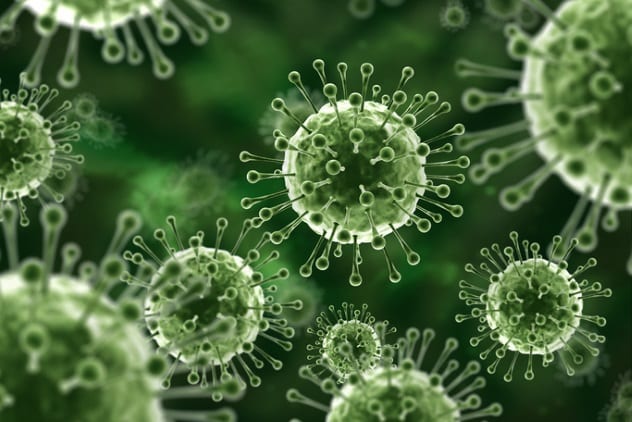
The answer to this question has nothing to do with some kind of quantum theory, where someone can be in two states at the same time. Nor does it refer to whether we can be like zombies, the classic description of the “living dead.” We can say that, yes, some creatures seem to be alive and dead at the same time. But everything has to do with the inability of scientists to agree on what exactly differentiates a living being from dead matter.
Some scientists understood that all life-forms must share immutable similarities in their nature and behavior. So in 1997, they proposed a list of seven conditions that something must meet to be considered a living being. Every living organism must have a complex chemical composition and be made up of basic structures called cells. It must be able to grow, reproduce, and respond to external stimuli. The creature must also have a metabolism to produce its own energy and be able to adapt to the environment.
Now let’s consider the case of viruses. Generally, and even from the scientific point of view, viruses are considered to be biological entities—that is, they are living beings. A virus has complex genetic material inside and definitely adapts to the environment. But a virus cannot grow or produce its own energy. (It feeds on the energy already produced by its host.) It also does not reproduce but replicates itself using the cells of the host. In fact, a virus is not even made of a single cell, and it remains to be seen if it responds immediately to external stimuli.[4] So we know that a virus is alive, but it does not meet most of the requirements to be alive, sharing more similarities with a machine instead.
It happens that many inert objects partially fulfill several of those conditions, too. Even fire could once have become a tricky phenomenon when it came to differentiating it from a true living being. As our knowledge of the elemental processes of life increases, we will be able to make the difference clearer.
7 How Much Does All Life Weigh?
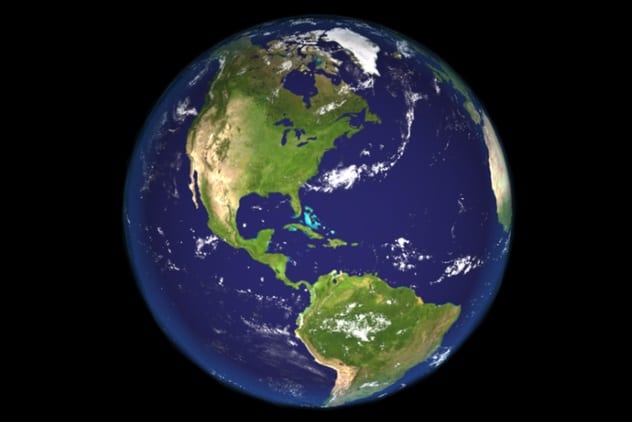
Compared to the rest of our solar system, anyone who sees the Earth from space can quickly notice that it is a planet covered in life. More than 30 percent of the continents of our world are covered by green vegetation. This, along with the blue of the oceans, makes Earth look like a living oasis in the midst of emptiness. But then one might wonder what the real, physical weight that life exerts on our planet is. For obvious reasons, until recently, it was very difficult to estimate the total mass of life on Earth. But studies conducted in 2018 show that even all living creatures put together are negligibly small in comparison to the vastness of our world.
In May 2018, American scientists published a report containing measurements of the mass of all carbon-based life on Earth.[5] Since all known life-forms are carbon-based, and carbon is an abundant element inside every living being, using it to estimate the total biomass seems appropriate. The results showed that in total, life on this planet weighs at least 550 gigatons of carbon, or, to simplify, 550 billion tons. Considering that the whole Earth weighs approximately 6.57 billion gigatons, that means that all living beings combined account for about one ten-millionth of the total mass of the planet.
As we can see, living nature is just a tiny portion of everything that makes our world. In this estimate, plant life represents more than 80 percent of the total biomass. Meanwhile, humans only represent 0.01 percent among all life. This is surprising, considering that our cities and buildings cover at least three percent of the Earth’s land surface, a huge proportion compared to the effect of other species. That means that although we are few, we are good at what we do, whether it’s something good or bad.
6 Is The Universe Itself Alive?
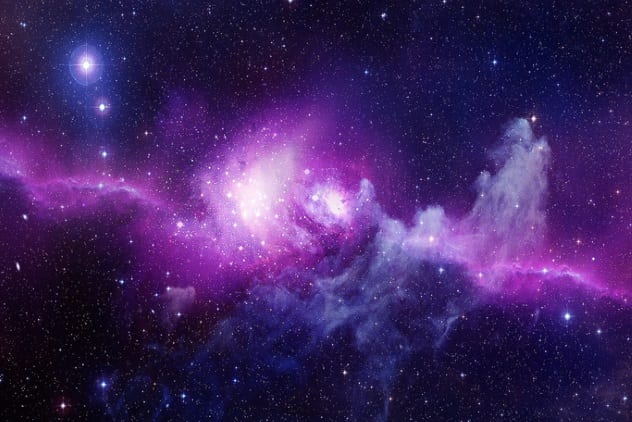
There are several philosophical theories that point out that the universe is in itself a living entity. For example, hylozoism holds that all matter is alive, while panpsychism is the idea that every object in the cosmos has a certain degree of consciousness. Over time, these theories were left aside, after the acceptance of new concepts such as evolutionism. But now, new discoveries and theories have allowed the idea of a sentient universe to gather strength again.
First, we have the case of some experts who have hypothesized about how consciousness could be an intrinsic part of any existing structure.[6] British physicist Roger Penrose theorized that human consciousness is the product of quantum processes within small regions of our brain cells. Taking this into account, astrophysicist Bernard Haisch conceived the possibility that “quantum fields”—the elementary structures that make up the universe—are capable of producing consciousness. In other words, any structure in the universe (be it a person or a star) can be sentient, since quantum properties are part of its own nature.
On the other hand, both its very structure and behavior serve as possible evidence that the cosmos really is a thinking entity. According to a 2005 study, the intricate structure of the material universe looks strikingly similar to the neural network in our brains. In addition, it has been known for a long time that the structure of an atom is similar—even in proportional distances—to the planetary arrangement of our solar system. And as if that were not enough, new studies show that certain stars make unexpected corrections in their orbits across the galaxy. More information will be needed to confirm if the latter behavior is common in the rest of the universe, but the idea of a living cosmos is captivating science now more than ever.
5 Is It The Same To Die As To Stop Living?

The short answer is no, it is not the same. Here comes the long answer: The concept of death has constantly changed over the centuries, becoming more accurate as our knowledge and technologies advance. For example, in the 19th century, a person was pronounced dead after simply ceasing to breathe. A hundred years ago, someone was officially dead once their heart stopped beating. And today, we believe that death occurs when our bodies suffer irreversible cell damage—that is, our vital functions can no longer be reactivated.
But even after a person dies and their body begins to decompose, that does not mean he or she is entirely dead. In fact, new research indicates that some processes occurring in a corpse challenge our understanding of death. A group of American and European scientists discovered in 2017 that after certain animals die, many of their cells are still fighting to survive. And they not only remain alive for days after death, but in some types of cells, their activity increases.
Everything points to the fact that, in an attempt to repair themselves, the cells in a dead body accelerate the process by which they transform DNA into instructions to make new proteins. And stem cells in particular are able to continue living not for hours or days but for weeks after the death of the creature. It is understandable if we take into account that every animal is a being composed of multiple populations of different cells. For this reason, some cells are more resilient than others, even after the apparent death of the body. And the same researchers state that this behavior occurs in all multicellular beings, including us.[7] So it is clear that the line between life and death is much more blurred than we thought.
4 Why Is Life So Diverse?
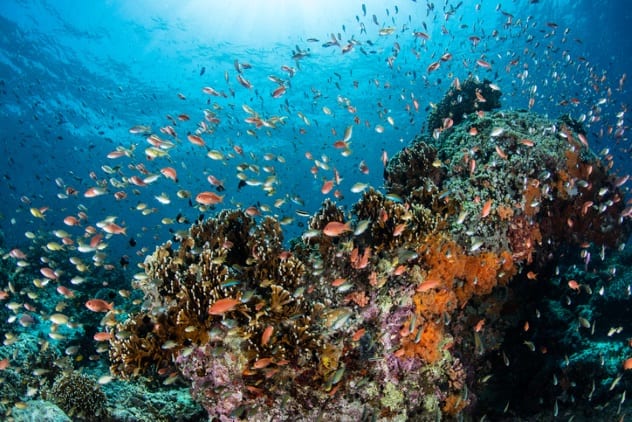
So far, scientists have discovered and studied nearly two million different living species. Among these, humans are part of a handful of 5,000 known species of mammals. In comparison, we know 360,000 species of plants and one million different types of insects. However, our knowledge about Earth’s biodiversity is very limited, and today, the scientific community believes there could be up to two billion life-forms on this planet. Knowing this and that, as previously mentioned, at this point, almost all life on Earth is extinct, one cannot help but wonder, why is there so much diversity of living beings?
We can say that life has a tendency to continue to multiply, no matter what, even if that means to radically change its nature. Since the emergence of life, the Earth has undergone multiple mass extinctions, hundreds of minor ice ages, and constant fluctuations in the sea level (on the order of hundreds of meters). Yet here we are, and studies indicate that in our time, biodiversity has expanded more than ever, at an exponential scale.
This is primarily due to the fact that every time a cataclysm erases much of life on the planet, survivors tend to adapt to the new environment, resulting in new species.[8] A clear example is the explosive increase of mammal species after the Cretaceous extinction event, 66 million years ago. It is also well-known that in order for an ecosystem to survive, its different life-forms will have to specialize and help each other. The air we breathe and the food we eat, for example, are conditioned for our consumption thanks to the work of other living beings such as plants and insects. Even forests are more resistant to disasters when they are composed of multiple tree species. So in a few words, try to erase life, and it will grow even more instead.
3 Which Organisms Have The Shortest And The Longest Life Spans?
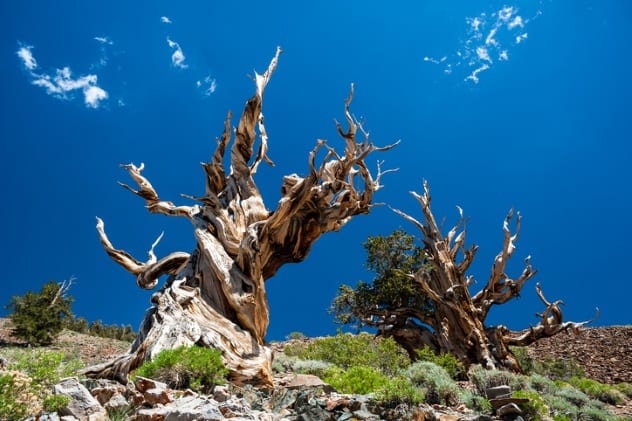
As we have just seen, life-forms on Earth are so diverse that the concept of a long life varies between species. What can be synonymous with longevity for one creature is only a fleeting moment in time for another. So in the following point, it will be more appropriate if we see some life spans of organisms very different from each other.
Let’s start by looking at the life spans of bacteria. As they do not grow in the way other living beings do, it is difficult to determine the age of a bacterium. But we do have a fairly precise estimate of its reproduction, the generation time. This term refers to the time that passes before a cell multiplies. If we presume that a bacterial population remains stable over time, then a bacterium will live at least as long as its generation time. In this case, the shortest-lived bacterium is the microbe Clostridium perfringens. It is estimated that its generation time is just 6.3 minutes. In the time it takes you to read four points of this list, a Clostridium perfringens has already lived and died.
In the animal world, the mayfly Dolania americana is surely one of the animals that lives the least. If we only consider the adult stage of its life in which the insect is fully developed, D. americana emerges, reproduces, and dies in 30 minutes or less. On the other hand, a clam found in Iceland in 2006 had lived for 507 years and could have lived longer if it hadn’t been killed as a result of being collected.[9]
Of course, we can’t leave out plants, which we know are among the most perdurable beings in the world. In fact, the oldest-known individual tree is a bristlecone pine from California that is more than 5,060 years old. When the humans of antiquity were beginning to develop writing, this tree was a youngling in its early years. On the other hand, the shortest-lived plants are believed to be the so-called ephemeral plants. Among these, plants of the genus Boerhavia can complete their entire life cycle in less than four weeks.
2 What Would The Earth Be Like If Life Did Not Exist?

So it is true that, in quantitative terms, life is a tiny part of what makes our planet. But it’s one thing to measure living beings according to their mass or volume and quite another to determine the effects these beings produce on Earth. So, what would happen to the Earth if life did not exist? Well, we can be pretty sure that without life, our good blue planet would no longer be good or blue.
The Earth’s atmosphere is 21 percent oxygen, an essential element for life-forms like us. But oxygen is an unstable gas that tends to combine quickly with other elements. Plant life on the surface is what replenishes the atmosphere with oxygen, filtering the gas constantly. If life on Earth did not exist, only small traces of oxygen would remain in the environment, while the atmosphere would be mostly composed of carbon dioxide. By this process, the temperature on the Earth’s surface would end up rising drastically.
In turn, higher temperatures would cause the melting of the polar ice caps and the subsequent rise in the sea level by tens of meters. Without life on the planet, the landmasses would suffer rapid erosion, and the mountainous regions would be seriously affected. After a long time, it is believed that the Earth’s temperature would rise to at least 290 degrees Celsius (554 °F). At this point, the oceans would end up boiling, leaving the planet completely uninhabitable. In a period of millions of years, a thick layer of clouds would cover the planet, aggravating the greenhouse effect and making the Earth look more like Venus.[10] If this sounds crazy, scientists believe that Venus—the same planet that today is pretty much Hell—once had liquid water and a pleasant temperature on its surface.
1 When Do We Start To Die?

The aging process occurs, in broad terms, because the number of new cells in our bodies is not enough to replace the number of cells that are dying. So when too many cells have died or no longer function, and therefore our organs can no longer function properly, we finally die. In short, we do not begin to age and die as long as our body can maintain a balance in the vitality of its cells. And even in fewer words, death happens when aging becomes too much for us. But then, when do we begin to age?
Certain literary authors and prominent figures have said over time that we begin to die from the moment we are born. That may be a thought-provoking reflection (and a good phrase, of course), but science would say that is not entirely true. For a child to become an adult, countless billions or even trillions of body cells will have to be formed, multiplied, and replaced in the meantime. And during such time, the person does not show tangible signs of aging but becomes more capable both physically and mentally.
In fact, we now know that until around the age of 25, the new cells outnumber or at least equal the number of cells that die in the body.[11] It is from the age of 25 that the cells begin to die faster than they can regenerate, thus causing our aging. In addition, studies show that at the age of 24, the brain also starts to lose cognitive speed. So aging, the process that eventually worsens to an unsustainable degree and causes our death, begins in our mid-twenties.
Economy student, passionate about Graphic Design, an avid enthusiast of the art of writing.
Read more about the mysteries of life and death on 10 Different Views On The Meaning Of Life and 10 Oddball Things To Make You Believe In An Afterlife.






